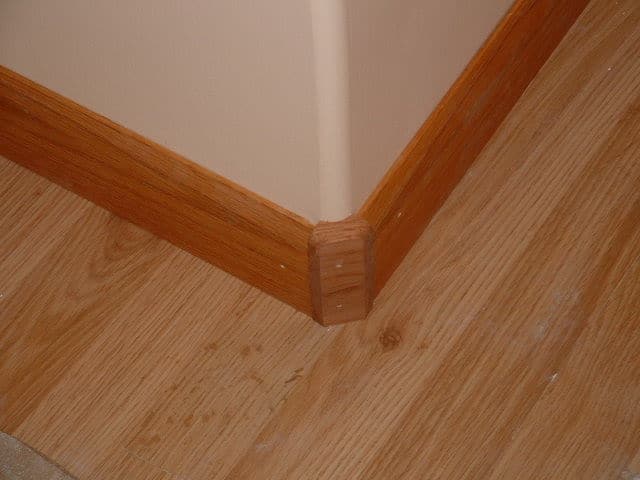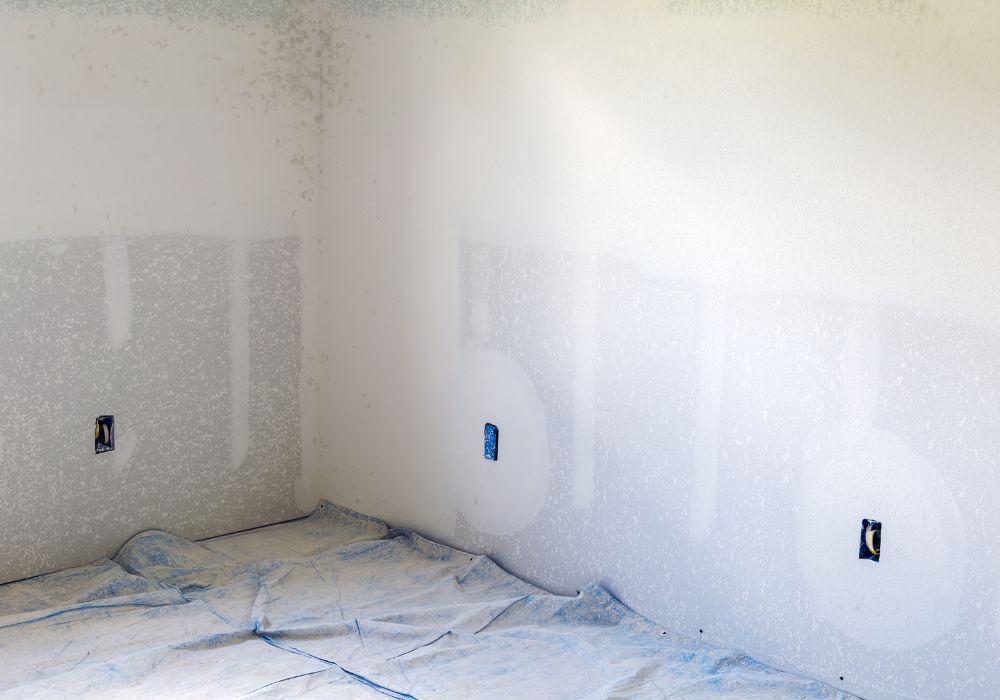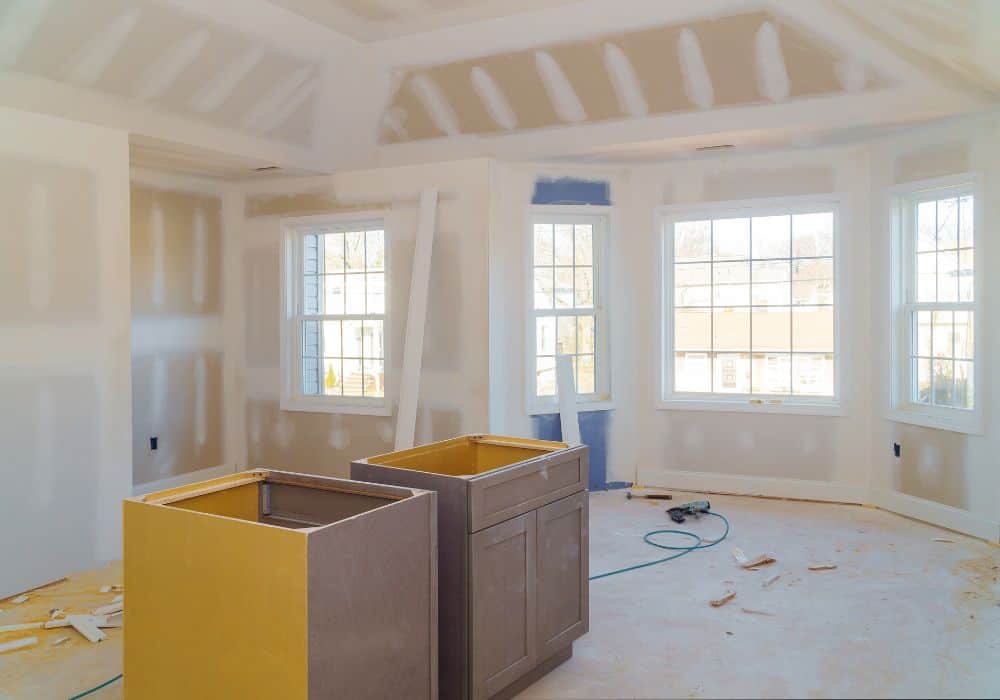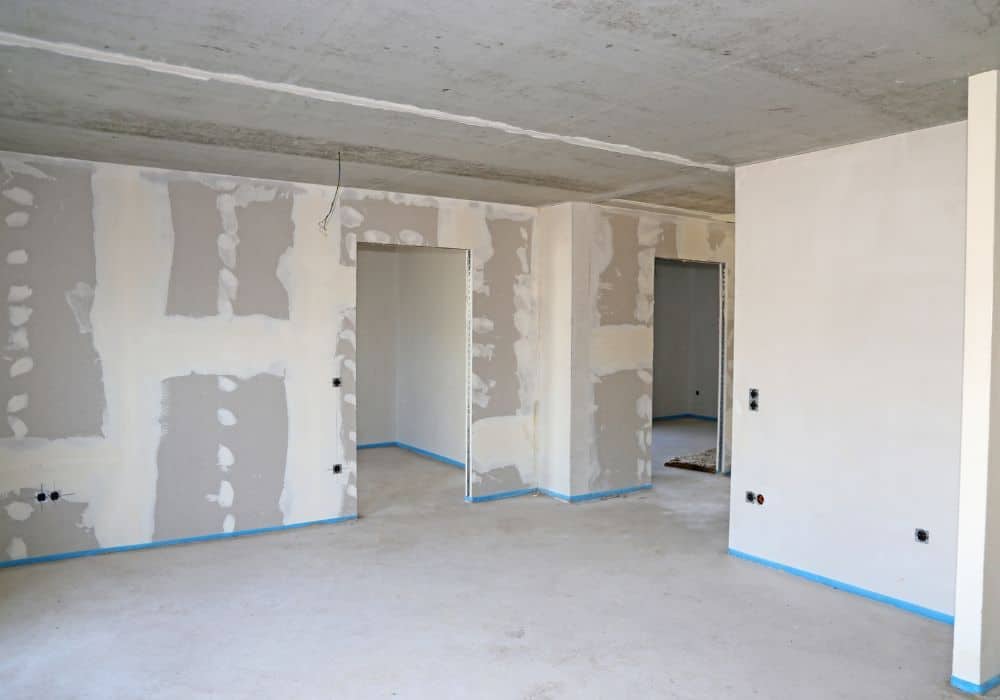Apart from protecting your walls, drywall pieces have several other functions. Drywall corners, for example, add to the functionality of the space and can make it look more stylish.
Because of this, choosing the right corners isn’t always straightforward, especially if you don’t know what you’re supposed to be looking for.
The most popular options are the rounded and the square corners, with each having its pros can cons. Here we look at rounded vs. square drywall corners and see which is right for you. Read on to find out more!
What are Rounded Drywall Corners?

When discussing your drywall options, rounded corners are important to consider. If you’re working with a contractor, they might mention these as bull-nose corners, but they’re essentially talking about rounded corners.
They are also called 90-degree rounded corners by professionals or experienced DIYers. They’re often applied for trim and finish, especially above areas like tiles, stairs, or adobe homes. This is because these areas may require a softer visual touch, which is what rounded corners are typically known for.
Others chose rounded corners because they simply want a unique element in their homes, and having rounded corners is a great way to make a statement.
Homeowners who are more concerned with achieving a specific aesthetic than with trending designs may also opt for rounded drywall corners. If you don’t mind your home looking a bit different than those around, there are plenty of benefits of having rounded corners. However, like in the case of square corners, there are also disadvantages to implementing round corners.
What are Square Drywall Corners?
It’s no surprise that square drywall corners have found themselves in the majority of homes, or that they’re still quite popular. When someone is building or remodeling their home and considering the type of drywall corners, most contractors recommend using square ones.
Unless the homeowner has a distinct aesthetic in mind that requires other types of drywall corners, this is probably the safest bet. They offer more subtle transitions and negligible differences, even if you’re using different colors. While this may not be an issue in areas where the wall juts out, when you get to the corners, you’ll definitely see the difference.
Square corners are also preferred because almost everyone can install them. You don’t have to be an experienced drywall installer, nor will you have to pay one to install your corners or baseboards. It’s enough to have little DIY experience and a sense of the right aesthetics. That’s not to say square corners don’t have any downsides or that they are absolutely the right fit for you.
Rounded VS. Square Drywall Corners Comparison

So, we know what these types of drywall corners are but which one is right for you? Here we’ll go a little more in-depth on the differences so you can choose the right one for you.
1. Baseboard Placement and Costs
Square corners are placed at a 90-degree angle, making it easier to install their baseboards. Plus, these corners are often pre-cut, so all you need to do is install them at the joints, regardless of their style.
In addition to making a better fit for square corners, square baseboards add to the visual appeal. They take away some of the sternness caused by the sharp edges of the square corners.
If you want to install drywall yourself, you’ll have a much easier job with square corners than with their round counterparts because these have no joints and come with round baseboards that are nearly impossible to install for non-professionals.
Rounded baseboards are more expensive on their own – and if you also have to pay someone to install them, your expenses will be even higher. That being said, these baseboards are more expensive because they need to be more flexible.
Otherwise, they would be even harder to install at the corners. And if you feel that the high-end appeal that round baseboards can provide is exactly what your place needs, the final look will likely justify the added expenses.
2. Aesthetics
One of the main reasons homeowners opt for square corners is because they are always in style. This means whoever has them installed will probably have a home looking just like every other house on the block.
They’re more conventional, and because of this, people find them more pleasing to the eye. On the other hand, if you want to update the aesthetics of your home, rounded corners will be the better choice.
Even if they’re installed in one room as a statement piece, they can elevate the style of your home in an instant. Since they’re less common than their square counterparts, they’re guaranteed to catch the eye of your visitors. This is a popular choice in new homes because they have more room for combined aesthetical features. Whereas older homes look better with the traditional square-style drywall corners.

3. Color Transition
Because drywall is relatively easy to paint, many homeowners choose to change up the color every now and then. A new color can transform the look of a room in an instant – as long as your drywall corners allow the seamless transition.
Not to mention if you want to get even more creative and start mixing and matching colors in different areas of the home – or even in the same room. Accent walls are becoming quite trendy, and squire corners are one of the main reasons for this.
Because they have heavily defined edges, square corners allow for an easier transition between the different colors. With rounded corners, there are no hard endpoints at each wall, and the transition between the colors can make the wall look a little messy.
4. Beads
In order to install drywall, an adhesive is used to connect the joints. These are called beads, and because the joints of square and rounded corners are located in different areas, the beads required for the installation will be different too.
In addition, the structure of the wall you’re placing the drywall may be different, as not all walls allow the installation of round or squire corners. This also affects which beads are needed. Rounded drywall corners use plastic beads, which are larger and more expensive.
They can also be more challenging to place, so they’re only recommended for experienced professionals. Square drywall corners need small metal beads, which can easily be placed at the corners, allowing anyone to for them smoothly and without making a mess.
5. Softening

Modern homes with shape edges may benefit from rounded corners as these typically give a softer look to any room. This makes the rooms look warmer and more inviting, unlike when you enter a room and encounter a sharp point at every corner.
The latter is definitely the case with the square corners, which make rooms feel more stark and cold. If you have arched doorways, the rounded corners will look even better because you can forfeit the trimming. You’ll have a clean opening that’ll stand out while inviting your guests through the doorway.
6. Durability
Regardless of the other factors that may affect your decision, durability is one of the most crucial issues you’ll need to consider when choosing drywall corners. Square corners are more sensitive to damage.
Whether there is work going on in the house that can impact the structural integrity of your wall or there are some underlying issues within the structure, it will reduce the longevity of these corners. Rounded corners are less sensitive to these issues, and it’s more likely they’ll last longer. If you’re looking for a durable drywall option, rounded corners are definitely worth considering.
7. Cracking and Chipping Under Pressure
Square drywall corners can also be susceptible to hairline fractures and chipping. While this may not be a noticeable issue in some places, it will be at the joint. Due to the additional stress placed at the seams of the wall, the chips will be bigger and may even grow over time.
Because of this, it’s recommended to avoid using square corners in high-stress areas. With rounded corners, the pressure is more evenly distributed, which makes these corners less prone to chipping and other pressure-related damages. They may occur over time, but this will be much later than in the case of square corners.
Final Thoughts
Considering all the information from above, picking your favorite can be easy and challenging at the same time. For one, the two options are quite different, and both have plenty of points in their favor. At the end of the day, it all comes down to your budget and preferences.
For example, if you’re going for a unique visual effect, you’ll want rounded corners. On the other hand, if you prefer easier installation, the recommended option is the square corners, simply because of their baseboards.
Hopefully, by now, you have a good idea of what will be the best solution for you. Weigh up the different options and see which one would be the perfect fit for your home.
